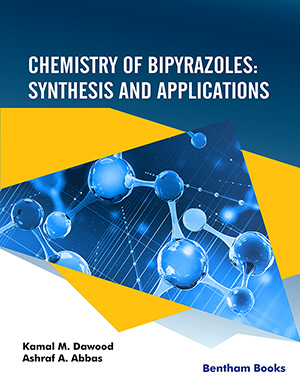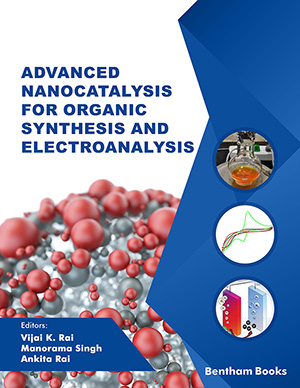
Abstract
DHA–lysophospholipids are raising considerable interest because they are recognized as being relevant to promote the biological effects of the dietary fatty acid, docosahexaenoic acid (DHA). With a view to meet the growing demand in DHA–lysophospholipids, several research works have investigated their production. DHA–lysophospholipid production can be carried out either by chemical synthesis or enzymatic synthesis using lipases or phospholipases.
While synthesizing DHA–lysophospholipids, a special attention must be paid on the stability of the products. In this frame, caution is needed to prevent DHA oxidation. The reaction conditions also need to be optimized in order to minimize the phenomenon of acyl migration which could lead to random proportions of unwanted products.
At last, analytical methods allowing identification and the quantification of different DHA–lysophospholipid isomers, have to be implemented in order to monitor the production.
Keywords: Acyl migration, docosahexaenoic acid, lipase, lysophospholipid, oxidation, phospholipase.
Current Organic Chemistry
Title:DHA–lysophospholipid Production
Volume: 17 Issue: 8
Author(s): Gaelle Pencreac’h, Francoise Ergan and Laurent Poisson
Affiliation:
Keywords: Acyl migration, docosahexaenoic acid, lipase, lysophospholipid, oxidation, phospholipase.
Abstract: DHA–lysophospholipids are raising considerable interest because they are recognized as being relevant to promote the biological effects of the dietary fatty acid, docosahexaenoic acid (DHA). With a view to meet the growing demand in DHA–lysophospholipids, several research works have investigated their production. DHA–lysophospholipid production can be carried out either by chemical synthesis or enzymatic synthesis using lipases or phospholipases.
While synthesizing DHA–lysophospholipids, a special attention must be paid on the stability of the products. In this frame, caution is needed to prevent DHA oxidation. The reaction conditions also need to be optimized in order to minimize the phenomenon of acyl migration which could lead to random proportions of unwanted products.
At last, analytical methods allowing identification and the quantification of different DHA–lysophospholipid isomers, have to be implemented in order to monitor the production.
Export Options
About this article
Cite this article as:
Pencreac’h Gaelle, Ergan Francoise and Poisson Laurent, DHA–lysophospholipid Production, Current Organic Chemistry 2013; 17 (8) . https://dx.doi.org/10.2174/1385272811317080005
| DOI https://dx.doi.org/10.2174/1385272811317080005 |
Print ISSN 1385-2728 |
| Publisher Name Bentham Science Publisher |
Online ISSN 1875-5348 |
Call for Papers in Thematic Issues
Catalytic C-H bond activation as a tool for functionalization of heterocycles
The major topic is the functionalization of heterocycles through catalyzed C-H bond activation. The strategies based on C-H activation not only provide straightforward formation of C-C or C-X bonds but, more importantly, allow for the avoidance of pre-functionalization of one or two of the cross-coupling partners. The beneficial impact of ...read more
Electrochemical C-X bond formation
Conventional methods for carrying out carbon–X bond formation are typically conducted at harsh reaction conditions, and rely on expensive catalysts as well as the use of stoichiometric, and perhaps toxic, oxidants. In this regard, electrochemical synthesis has recently been recognized as a sustainable and scalable strategy for the construction of ...read more
From Lab Bench to Algorithm: The Future of Organic Chemistry Powered by AI
Organic chemistry, with its intricate dance of molecules and reactions, is undergoing a transformation fuelled by the power of Artificial Intelligence (AI) and Machine Learning (ML). The integration of AI/ML with Organic Chemistry is revolutionizing the field by enhancing the efficiency and accuracy of chemical research and development. These technologies ...read more
N-Heterocyclics: Synthesis, Computational Studies, and Coordination Chemistry - A synthetic perspective
N-heterocycles, such as phenanthroline, quinoline, or their organometallic complexes, are widely used in a variety of fields, including chemistry, biochemistry, and coordination chemistry. They play a key role in many chemical and biological processes as biological ligands, medicinal agents, catalysts in organic synthesis, molecular probes and sensors, as well as ...read more
Related Journals
 27
27
- Author Guidelines
- Graphical Abstracts
- Fabricating and Stating False Information
- Research Misconduct
- Post Publication Discussions and Corrections
- Publishing Ethics and Rectitude
- Increase Visibility of Your Article
- Archiving Policies
- Peer Review Workflow
- Order Your Article Before Print
- Promote Your Article
- Manuscript Transfer Facility
- Editorial Policies
- Allegations from Whistleblowers
- Announcements
Related Articles
-
Separation and Purification of Small Peptides from Fermented Sesame Meal and Their Antioxidant Activities
Protein & Peptide Letters Early-Life Lead Exposure: Risks and Neurotoxic Consequences
Current Medicinal Chemistry Different Effect of Vitamin D<sub>2</sub> and Vitamin D<sub>3</sub> on Amyloid-β40 Aggregation In Vitro
Current Alzheimer Research Lagenaria siceraria: A Potential Source of Anti-Hyperlipidemic and Other Pharmacological Agents
Current Nutrition & Food Science The Pro-Apoptotic Substance Thapsigargin Selectively Stimulates Re-Growth of Brain Capillaries
Current Neurovascular Research Thrombolytic Therapy in Acute Ischemic Stroke - Basic Concepts
Current Vascular Pharmacology Identification of High-affinity Small Molecules Targeting Gamma Secretase for the Treatment of Alzheimer’s Disease
Current Topics in Medicinal Chemistry Conference Report: (13th International Congress on Amino Acids, Peptides and Proteins (ICAPP); Neurobiology Symposium, October 5-7, 2013; Galveston TX, USA.)
CNS & Neurological Disorders - Drug Targets 11C-verapamil to Assess P-gp Function in Human Brain During Aging,Depression and Neurodegenerative Disease
Current Topics in Medicinal Chemistry Oxidative Stress and Post-Stroke Depression: Possible Therapeutic Role of Polyphenols?
Current Medicinal Chemistry Cerebral Microinfarcts and Dementia: A Systematic Review and Metaanalysis
Current Alzheimer Research Dampening the Progression of Dementia
Current Neurovascular Research Importance of ABC Transporters in Drug Development
Current Pharmaceutical Design Adrenergic Drugs Blockers or Enhancers for Cognitive Decline ? What to Choose for Alzheimer’s Disease Patients?
CNS & Neurological Disorders - Drug Targets The NMDA Receptor/Ion Channel Complex: A Drug Target for Modulating Synaptic Plasticity and Excitotoxicity
Current Pharmaceutical Design Cellular Mechanisms of Brain Injury and Cell Death
Current Pharmaceutical Design Selectivity Problems with Drugs Acting on Cardiac Na<sup>+</sup> and Ca<sup>2+</sup> Channels
Current Medicinal Chemistry Insulin and the Brain
Current Diabetes Reviews Patient-Specific Induced Pluripotent Stem Cell Models in Mitochondrial Diseases
Current Stem Cell Research & Therapy Variability in Individual Responsiveness to Aspirin: Clinical Implications and Treatment
Cardiovascular & Hematological Disorders-Drug Targets





















